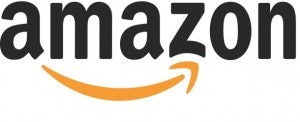
I have some serious concerns with Prime Video
Amazon directly competes with Netflix, Inc. (NASDAQ:NFLX) in the movie streaming space because Amazon.com, Inc. (NASDAQ:AMZN) believes that by providing a large content network, consumers will more easily purchase products and services through its Amazon Prime subscription service. I am skeptical of Amazon’s product positioning when basing it strictly from a financial standpoint. The company’s attempt at improving its profitability through a movie subscription service through additional cross-sells hasn’t been reflected in the financial data.

Source: Netflix
The above diagram is essentially trying to illustrate the amount of top content each firm has. The content figures clearly illustrate that Netflix is substantially ahead of Amazon.com, Inc. (NASDAQ:AMZN) Prime. So, rather than Amazon Prime trying to compete with Netflix directly, it would be wiser for Amazon Prime to provide content that Netflix, Inc. (NASDAQ:NFLX) simply doesn’t have. The problem with that of course is that providing content that others do not have would often involve the production of individual content. To do this, Amazon plans on producing 14 test episodes of comedies and children’s series, these TV series are something that Amazon instant video will provide at no additional cost to Amazon Prime subscribers.
What Amazon lost
I also want to point out that Amazon.com, Inc. (NASDAQ:AMZN) could end up wasting a lot of shareholder equity based on the figure below.

Source: Ycharts
Amazon first released its Amazon Instant Video in 2006. Amazon started committing serious financial resources towards its Amazon Instant Video a couple of years ago, whereby it provided a content collection of 5,000 movies and TV shows. I pulled up a chart showing the net profitability of the company from the beginning of 2011 (approximately when the company invested heavily into Amazon Instant Video) up until the present.
The company’s profitability declined from 2% to (2)% up until the middle of 2012. After that, the company was able to improve its net profitability to 0.51%. The company’s improvement in profitability can be attributed to the fact it slowed down its content acquisition efforts as it was Netflix, Inc. (NASDAQ:NFLX) that won The Walt Disney Company (NYSE:DIS) and Time Warner Inc (NYSE:TWX) with multi-million dollar deals that effectively shut Amazon out of the market for blockbuster hits at the box-office.
I am also a skeptic of Amazon.com, Inc. (NASDAQ:AMZN)’s ability to transform its Instant Video into a serious competitor with Netflix as the company’s brand-extension confuses from the Amazon brand’s original identity of web-based shopping. In The 22 Immutable Laws of Marketing, the authors doubled down on their anti-extension advice saying “a line extension ultimate leads to oblivion” and warning that to be successful you have to narrow a brand’s focus.
In this specific case with Amazon, I am heavily favoring the idea that brand extension could be a disaster. Currently, Amazon is expanding the brand identity by foraying into movie streaming services, but it bundles the value of Amazon Prime with instant streaming. So now, consumers have to pay an additional amount of money for an added service that consumers may not want.
For this reason, from a microeconomics standpoint, I believe that some consumers are paying up for additional services that other consumers may not want which may mean potential dead-weight loss due to overproduction. If that is the case, the company is losing out by widening the brands focus to mean less of what it was originally intended for and at the same time, consumers are over-paying for unnecessary add-ons.

